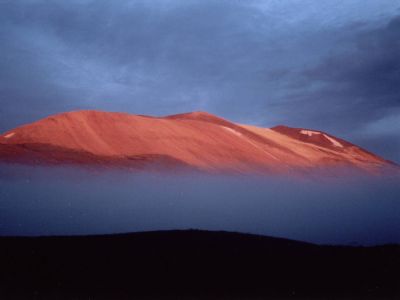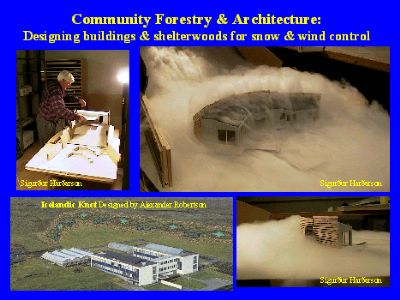
WELCOME TO WIND AND LANDSCAPE
Your host
DR. Alexander (Sandy) Robertson, M.Sc.,(Memorial) D.Phil.(Oxford)
The main feature of this website is the series of 9 slide shows that make up the Wind Reader - a series of pdf's which are primarily a photographic interpretation of the nature of wind in the beautiful and extremely diverse and photogenic landscapes of ICELAND, SCOTLAND and NEWFOUNDLAND
introduction 1 visualizing turbulence part 2 assessing wind 3 weather effects 4 shelterwood and structures
5 design with nature 6 architecture 7 biodiversity 8 geodiversity 9 cultural themes
Much of the content, particularly my photographs is intended to share in the enjoyment that many my friends have in a labour of love for landscape restoration in Iceland - which has some of the world's beautiful landscapes. Wind can be both a nuisance and a blessing and identifying and compensating for the negative while enhancing the positive aspect of wind often requires a very broad outlook and unorthodox thinking. While I have posted many, somewhat esoteric articles related to wind, it is well to keep in mind that website is as much about people and their cultiure who have done much to ameliorate the negative aspects of wind as it is about demonstrating the positive - and somewhat unorthodox ways in which we assess and deal with wind. So with all due respect to theoretitions I am reminded of Shelock Holms comment to his colleague Dr. Watson "My dear Watson, you have a remarkable talent for explaining the obvious". In other words we all have our own ways of living with and compensating for wind. In fact, a better title for this website would be People Who Live and Work With Wind. On this site you'll see photos of many people doing just that. For example, in the photo of me fishing in the neighborhood of a couple of famous famous volcanoes - Hekla and Eyjafallajökul - I am well aware of the turbulent patterns in the river (as are the salmon which make good use of them) and I see also the patterns of winds past and present in the landscapes near and far.
The world looks with some awe upon a man who appears unconcernedly indifferent to home, money, comfort, rank, or even power and fame. The world feels not without a certain apprehension, that here is someone outside its jurisdiction; someone before whom its allurements may be spread in vain; someone strangely enfranchised, untamed, untrammelled by convention, moving independent of the ordinary currents of human action." Winston Churchill, statesman (1874-1965)
Of course, there are many complex ways of expressing wind in the landscape. However, while I brush around the edges of environmental science and statistics, the primary objective is to help sharpen your powers of observation of wind in the landscape for your own enjoyment as well as showing you how, over the past 55 years, my friends and colleagues in soil conservation, forestry, farming, gardening, urban liveability, architecture and heritage have tackled the enigmatic wind in many practical and attractive ways that enhances and rejuvenates landscapes. A simple graphic way of visualizing the nature of wind across a landscape, is to mimic on-shore coastal fog-banks and inversions like that below beautifull Sandfell in east Iceland (middle photo below) by constructing or carving a model and create a fog by pouring hot water onto dishes of dry-ice and let it flow down an incline (bottom photos). In this way we can see how wind move across a mountainous landscape. Many examples of this simple technique are shown throughout the WINDREADER and in Íslensku LESIÐ Í VINDINN.


There are other articles and information on issues related to the broader aspects of landscapes: such as the transformation from worn-out pastures to magnificent, productive grassland and woodland; a few of my artistic and technical art works such as the wood carvings on the history of the Iceland Soil Conservation Service (which depicts a lot of wind effects); botanical illustrations of plants and technical drawings of marvellous old water powered sawmills that used to grace the 'outports' of Newfoundland from the 17th to the 20th century and no longer exist. For a little off-beat light entertainment you can here music from the ultimate wind instrument for landscapes - The Great Highland Bagpipes and its wee indoor cousin the Scottish Small Pipes. from
Much of the content of this website resulted from a great working relationship and close friendship with the Icelandic Forestry Association (Skóræktarfélags), Iceland Soil Conservation Service (Landgrgræsla Ríkisins), Iceland Forest Service (Skógrækt Ríkisins), Agricultural University of Iceland (Landbúnaðáðarhaskólin), Westfjord Shelter Forests (Skjólskógar á Vestfjörðum) and Forestry Commission (Scotland). See Links section for their very useful websites (updated daily).
![]()



